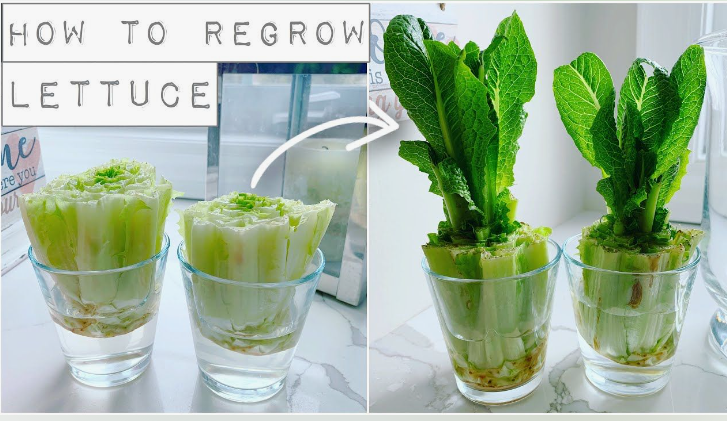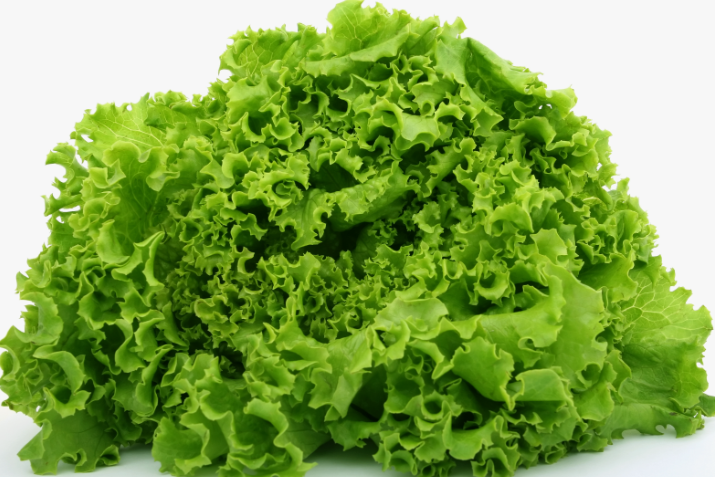Gardening at Home
Think about how wonderful it is to grow your own tomatoes for a fresh dinner. Gardening at Home will help save your money on grocery

Growing lettuce from scraps is a simple and enjoyable way to maximize the value of your kitchen waste. Not only will you reduce waste but you’ll also have access to fresh supplies for salads or other recipes!
How to grow lettuce from scraps? To grow lettuce from scraps, take the stem-end of purchased lettuce that is usually around one to two inches from its base and place it in a shallow dish filled with water. Place this near a windowsill with ample light and airflow; don’t forget to change its water every one or two days for optimal growth!
Soon enough, new leaves will begin emerging from the stem, creating a brand-new lettuce plant! Now that we understand the basics of growing lettuce from scraps, let’s delve deeper into this process and look into ways to ensure its success.
Let me show you how I select appropriate lettuce scraps to grow new lettuce plants from scraps. There are numerous types of lettuce to choose from – no need to be limited by just one! I recommend starting out with either Romaine hearts, Boston leaf or Red leaf varieties which work great as starting points.
When I select lettuce scraps, I ensure they have a healthy-looking base. The base includes all of the stalks that hold up the leaves; typically this portion measures around one or two inches long. Yellow, slimy or moldy scraps should be avoided as these won’t support healthy growth.
As I cut off lettuce leaves from their original heads of lettuce, keeping things organized is also crucial to keeping my leaves crisp and prevent unnecessary damage during this process.
Step One of Regrowing Process Save Your Scraps When eating lettuce, save the bottom part of its stem 1-2 inches from its base in order to regrow our lettuce plants. This portion will serve as our seed source.
Step 2: Prepare Your Dish. Obtain a shallow bowl or dish and fill it with approximately half an inch of water to submerge the stem, but no deeper so as to prevent rotting.
Step 3: Arrange the Stem. To place your lettuce stem properly in its dish of water, make sure that its base is halfway covered by water. If the stem feels unstable, toothpicks can help stabilize it to keep it from tipping over.
Step 4: Locate a Sunny Location. Place the dish with lettuce stems on a windowsill or under grow lights for optimal lighting conditions, though direct sun could overheat the water and damage your lettuce stems.
Step 5: Maintain a proper water environment. Every day, check the level and ensure the lettuce stem remains submerged. Also change out your water every one to two days to maintain freshness and avoid soggy edges.
Step 6: Monitor Your Lettuce Grow. After several days, leaves should start sprouting from the stem and blooming off of it, ready for harvest after 10-12 days! Keep in mind that lettuce regrown from scraps might produce smaller leaves than its original version; plan to have enough for at least a couple sandwiches!

I enjoy growing lettuce from scraps, and it can be done both indoors and outdoors. A windowsill provides enough light for it to grow well while protecting it from direct sunlight – as lettuce prefers some shade.
If, like me, you don’t have a sunny windowsill to plant on, don’t fret! An indoor garden may be the ideal alternative. Grow lights can help ensure that lettuce receives sufficient light; ensure it gets 12 hours per day so it grows strong and healthy!
When growing lettuce outdoors, selecting an ideal location is also key. Lettuce thrives best in cooler temperatures with partial shade; therefore it should be planted somewhere protected from direct sun rays. However, growing lettuce from seed scraps might produce mixed results as many have already been grown hydroponically; nevertheless it never hurts to try!
Growing lettuce can also be accomplished in your backyard, balconies and community gardens with proper permission and by adhering to any local rules that might apply.
Finally, keep in mind that lettuce doesn’t require much space to flourish. You can plant it directly into pots, containers, or the ground – just ensure there is enough room for its roots to expand and spread outward.
How to grow lettuce from scraps? Though regrowing lettuce scraps in soil is possible, for best results it’s best to start them in water first – at least until some new leaves emerge and roots have grown longer and stronger – before moving it into soil.
Let’s move onto containers: the size and type will depend on how large of a lettuce plant you want to cultivate, with drainage holes provided to allow excess water to escape and prevent root rot. Starting small like with a reused yogurt cup or small pot is fine before expanding as necessary. Below are a few guidelines I find helpful when selecting containers for lettuce growth: Make sure the container is clean and sterile to help prevent diseases and pests that could threaten our plants; additionally select one with at least 6-8 inches depth to give the lettuce roots enough room to expand. Make sure that there is sufficient space for the lettuce to thrive, without overcrowding it.

I’m Ciara and I’m a gardener and agricultural educator in zone 6b. I’ve farmed and gardened all over the Appalachian mountains and love to empower people with the tools they need to start their own gardens.
Think about how wonderful it is to grow your own tomatoes for a fresh dinner. Gardening at Home will help save your money on grocery
No backyard? No problem! Even in a small apartment, you will be able to grow fresh food and flowers. City gardening introduces urban life to
Grab a bag of topsoil from the store – but Can You Use Topsoil for Gardening? Topsoil is a go-to for many gardeners, often used
Applying mulch can cut down watering by one-half, while also making plants grow stronger and healthier, but this happens only if you do it properly.
The gardening industry is booming; the average landscaper makes $50,000/year, and specialty growers can earn much more! With rising demand for local food, sustainable landscaping,
Why pay for dirt when nature gives it away? Quality soil is the backbone of a thriving garden, but it doesn’t have to cost a